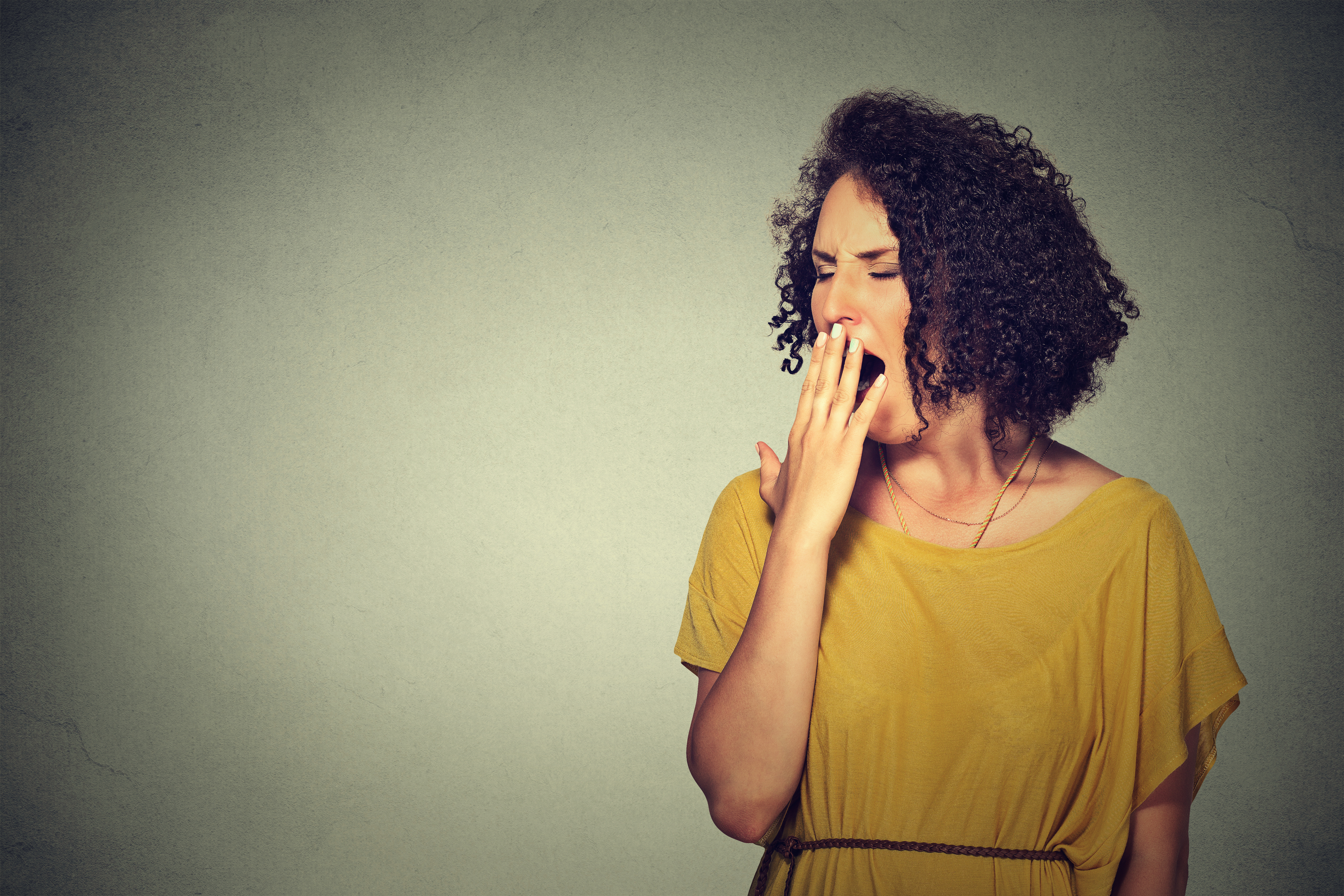
For many of us, bedtime can become an anxious wait for sleep that never comes and endless hours staring at the ceiling.
If that sounds like you then you are not alone.
In fact, research by the UK’s Sleep Council says in today’s fast-paced society, almost a third of us get a poor sleep most nights.
Nearly three quarters of us get less than the average sleep requirement of seven or eight hours a night – and 12% get less than five.
Even more alarmingly, 35% of us have suffered from sleep problems for more than five years.
Sleep deprivation can leave us exhausted, irritable and unwell. But it has also been linked to a whole host of chronic conditions including type 2 diabetes, heart disease, strokes, high blood pressure, obesity and depression.
If a full eight hours’ sleep is elusive, it could be due to a variety of medical conditions.
Insomnia, and changes to typical sleep patterns, are often an early sign of perimenopause.
Racing thoughts, and persistent feelings of stress, make it difficult for many women experiencing menopause to unwind.
If you experience night sweats, a simple blood test at your GPs will confirm if you are going through hormone changes. Wearing cotton PJs can help.
If you are also a habitual snorer you may be suffering from obstructive sleep apnea (OSA), where breathing becomes temporarily impaired and blood pressure rises. A doctor can help determine if you have OSA and offer treatment options.
Restless Legs Syndrome (RLS), when limbs twitch and jerk, can also cause a restless night. One in 10 adults suffer from RLS, and the chance of developing this disorder increases with age.
Certain medications including those prescribed for high blood pressure, heart conditions and depression can cause the condition.
To alleviate RLS, a doctor may suggest cutting back on caffeine and alcohol, taking an iron supplement, and creating a targeted exercise regimen.
Asthma, diabetes, and gastroesophageal reflux disease can all negatively impact the ease of breathing, thereby making sleep more challenging for older adults.
However, healthy sleep habits can help relieve these conditions’ negative impacts on sleep.
Dr Renata Riha, of the Sleep Research Unit at Edinburgh University, says sleep is one of the three pillars of health, alongside good nutrition and physical exercise.
She said: “Some people don’t think sleep is important and try to fit a 25-hour lifestyle into a 24-hour day.
“The main reasons for not sleeping range from anxiety and depression, to worry, anger and medical conditions.But modern-day habits from bad diets and too much caffeine, to using phones and tablets too late at night, can also have a detrimental impact on our sleep patterns. It can lead to increased inflammation in the body and have an impact on all body organs, including the skin.”
Breaking the insomnia cycle can be difficult but the author of a new book, 222 Ways To Trick Yourself To Sleep, says she may have the answer. Using the latest scientific studies, Kim Jones has come up with a long list of tips and tricks to help you get a good night’s rest.
She says: “You may be surprised to learn that everything from warming your feet and how you breathe to reframing your thoughts and mindset, can all help to get you off to sleep.”
Kim shares more tried and tested ways to alleviate insomnia on the facing page.
For more help, see sleepfoundation.org
Some top tips to try…
Rock yourself to sleep
Researchers from the University of Geneva found that adults who took a nap in a rocking bed fell asleep faster than in a bed that was stationary.
Curb binge-watching
Resist the urge to watch ‘just one more’ episode. A study found that binge-viewing habits were associated with poor sleep, fatigue and symptoms of insomnia whereas regular TV viewing wasn’t.
Give yourself a face massage
A study published in Complementary Therapies in Clinical Practice found that women who had a 20-minute facial massage experienced a drop in blood pressure, as well as getting sleepy.
Listen to soothing music
Source some string-based beats with no extreme variations in volume and no repeated melody. This allows your mind to wander dreamily because you’re not anticipating the repeat.
Go green
Add plants to clear the air for a better sleep. NASA’s Clean Air Study says plants like peace lilies and chrysanthemums are good at removing household toxins.
Have a laugh
A study published by the Korean Journal of Adult Nursing found that elderly people who were prescribed laughter therapy improved their sleep and reduced their symptoms of depression.
Cover clock faces
If you start clock watching, you’ll start stressing about how much sleep you’re missing and it will be harder to drift off. Just set your alarm and turn it away.
Get some vitamin sea
A report by the National Trust found that people who took a coastal walk slept on average 47 minutes longer that night than they did the night before – and 35 minutes longer than those taking a walk inland.
Chill your pillow
Put your pillow in the fridge for the day. Because your neck and temples contain pulse points where blood vessels are close to the skin, it helps cool your blood down quickly so the rest of your body feels less hot.
Play mind games
Give your brain some mental exercise to do when you hit the hay. Try counting backwards from 100 – or even 1000 – in groups of five.

Enjoy the convenience of having The Sunday Post delivered as a digital ePaper straight to your smartphone, tablet or computer.
Subscribe for only £5.49 a month and enjoy all the benefits of the printed paper as a digital replica.
Subscribe